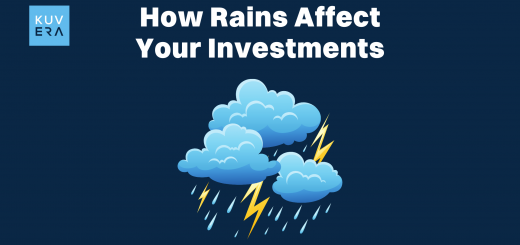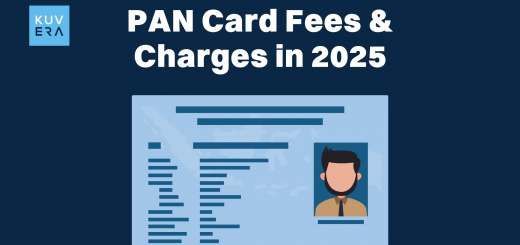The low-risk investment is the finest option for those who do not want to deal with unpredictable market fluctuations. These are investment options that generally provide a fixed income regardless of changes to the economy or business. This group includes fixed deposits and other investment alternatives such as National Savings Certificates, Employees’ Provident Fund, Public Provident Fund, Sukanya Samriddhi Yojana, and Senior Citizen Savings Schemes, which are government-sponsored schemes and offer low-risk guaranteed returns.
There are many low-risk investment options available even for those who do not understand the intricacies of finance. By investing money wisely, individuals can protect themselves from the unpredictability of the markets and get a good return on their money. Some of them are discussed below:
-
Public Provident Fund (PPF)
In order to mobilise small deposits in the form of investments with a return, the Public Provident Fund (PPF) was established in India in 1968. It is also known as a savings-cum-tax savings investment vehicle that enables one to save wealth for retirement while reducing annual taxes. A PPF account can be opened by anyone looking for a secure investment alternative to reduce taxes and earn assured profits.
Features of a PPF Account
The following are the key characteristics of a public provident fund scheme:
- Investment tenure
A PPF account has a 15-year investment lock-in period before which funds cannot be fully withdrawn. After the lock-in period is over, an investor may decide to extend this tenure by an additional 5 years if desired.
- Primary Amount
A provident fund scheme allows individuals to invest a minimum of Rs. 500 and a maximum of Rs. 1.5 lakh per year. This investment can be made in a lump sum or in installments. For an account to remain active, an annual contribution must be made to a PPF account.
- Eligibility Criteria
Indian citizens residing in the country are eligible to open a PPF account in their own name. A Public Provident Fund account in a minor’s name is also permitted as long as their parents manage it. Non-resident Indians are not permitted to open a new PPF account. Any accounts already opened in their name will, however, continue to be active until the term is over. An advantage for Indian citizens is that these accounts cannot be extended for 5 years.
- Interest in a PPF Account
The Central Government of India sets the interest rate for public provident fund schemes. It aims to offer a better interest rate than standard bank accounts offered by various commercial banks in the country. Current interest rates for these accounts are 7.1%; they are subject to quarterly changes at the government’s discretion.
- PPF – Tax Advantages
The principal amount invested in a PPF account is exempt from income tax. A tax exemption claim for the entire investment’s value is permitted under Section 80C of the Income Tax Act of 1961. However, it should be noted that the maximum principal that can be invested in a single financial year is Rs. 1.5 lakh.
Additionally, the total interest accrued on PPF investments is exempt from taxation. Because of this, taxation is not applied to the entire amount redeemed from a PPF account after it reaches maturity. This policy makes the public provident fund plan in India appealing to a large number of investors.
-
Fixed Deposits
Fixed deposits are one of the most common methods of saving money in India. They provide strong returns, are risk-free investments, and are easy to open. A fixed deposit also referred to as a term deposit, is one of the most secure financial instruments available. For instance, investors receive safe, stable, and fixed returns on a predetermined date based on the interest payment plan they select. Interest payment schemes include monthly, quarterly, and semi-annual options.
The Advantages of Fixed Deposits
- Fixed Returns
The interest rate on the FD is fixed, so the investment is secure regardless of market conditions. According to the payment plan investors select, they will continue to earn the fixed interest amount, i.e., fixed returns on a fixed date.
- Capital Protection
There is no need to worry about capital erosion when investing in FDs. The funds remain in the bank, which swiftly pays the interest that is due. Investors receive their entire investment back when the FD matures. As a result, investors don’t suffer any investment losses.
- Secure investment plan
One of the most important FD benefits is a secure investment plan. Fixed deposits are one of the instruments that are best suited for anyone if they are expecting a guaranteed return on their investment. This is because the rate of return on a fixed deposit is fixed and users will receive the principal amount back along with additional interest after a fixed term.
- Low risk
Low risk is one of the advantages of fixed deposits because the interest rate is not impacted by market volatility, making them a less risky investment.
- Tax-saving
The Income Tax Act of 1961’s Section 80C allows individuals to deduct up to 1,50,000 rupees from their taxes. Only if users make an investment in a tax-saving fixed deposit, which is frequently provided by banks and post offices, is their investment eligible for tax deduction under this provision. The tax liability is significantly reduced with this kind of investment.
The most reliable and sufficient financial instrument is the fixed deposit because even people with little risk tolerance invest their money in them.
-
Recurring Deposits
Recurring Deposits (RD) are a type of savings option that assists with future planning. With an RD saving account, individuals can routinely save a small sum with monthly contributions for a predetermined length of time while earning interest on those deposits.
A lump sum payment and interest are made once the RD deposit matures. An RD’s interest rate is constant for the duration of the RD, making it simple to calculate how much one can make by investing in one.
Features
A recurrent deposit has the features listed below:
- Investment Amount
RD investments don’t need a lot of money. They are ideal for all categories of investors as a result. Individuals can invest in RDs with very little amount. . The minimum deposit amount, however, may vary between institutions.
- Tenure
The investment period for RD schemes generally spans from six months to ten years.
- The Interest Rate
Compared to standard bank savings accounts, RDs usually provide higher interest rates. Senior citizen depositors additionally receive special interest rates.
- Investing Effectiveness
To establish a disciplined approach to saving, the investor must consistently deposit a particular amount as part of a recurring deposit scheme.
- Easy to Invest
The best option for this is a recurring deposit because it will be easy for clients who are salaried to put away a specified amount each month for savings. Additionally, the interest rate for RD is fixed, shielding the investment from fluctuations in interest rates. RD schemes frequently provide guaranteed returns.
Voluntary Provident Funds (VPF)
The EPF is a great way to save money for retirement by putting some of the salary into an account. It is a government-sponsored retirement savings plan for those working in the organized sector. The Voluntary Provident Fund (VPF) is an extension of the EPF. Both the employee and their employer make contributions to the employee’s account under the EPF Scheme. In a voluntary provident fund system, only the concerned person is required to make regular payments. Therefore, VPF may be easily understood as a scheme where people choose to contribute an additional amount of their income.
The Advantages of Investing in Voluntary Provident Funds (VPF)
The key advantage of a VPF account is that it falls into the Exempt-Exempt-Exempt (EEE) category. Therefore, by investing in VPF, individuals can profit from tax advantages and increase their wealth over time. The benefits of a VPF account are as follows:
- Safe investment option
The scheme is a safe investment option because it is operated by the government of India.
- Easy to Apply
To register a VPF account, an employee must approach his HR/Finance team and urge them to submit a registration form requesting an additional contribution to the VPF.
- High returns
Under Section 80C, contributions up to Rs. 1.5 lakhs per year and interest accrued are exempt from tax, resulting in higher long-term profits.
-
Gold
In Indian culture, gold is considered to be a very important investment. The only option to invest in gold before was by purchasing physical gold. Additionally, gold can be purchased as gold jewellery, artefacts, or bullion coins. With gold still being one of the most often purchased assets, there are numerous options to invest in gold in India. Anyone can invest in gold either in its physical or digital form. As an investment, gold can be held in its physical form as jewellery, coins, bars, bullion, etc. The following are some significant drawbacks of purchasing actual gold:
- Making/designing fees increase the cost of the purchase.
- Storage costs apply due to security and insurance requirements.
Digital assets such as Digital Gold, Gold ETFs, Gold Mutual Funds, and Sovereign Gold Bonds can be utilised to overcome the constraints of physical gold. Some of these investing alternatives are briefly described below:
- Digital Gold: These are available for purchase through a variety of apps in increments starting at 1 gram.
- Gold Exchange-Traded Funds: Gold ETF is an open-ended mutual fund whose underlying asset is gold. Having a Demat (dematerialized) account is required to purchase gold ETFs.
- Sovereign Gold Bonds: The Reserve Bank of India (RBI) periodically issues these bonds. SGBs are government securities denominated in grammes of gold. They serve as substitutes for physical gold. The RBI issues SGBs during the financial year in a variety of tranches. These securities are offered through banks, brokers, post offices, and online distribution channels. Investors who want to purchase gold solely for investment purposes might consider SGB as a viable choice. SGBs make sure that the gold’s quality is maintained and that investors are secured against risk.
Advantages of Investing In Gold
A few of the advantages are:
- Gold investments are highly liquid
There are more uses for gold than as an investment. People in India also purchase gold for personal use. Therefore, it is influenced by mainstream gold demand as well as investment demand. Consequently, this scarce good is liquid. Additionally, one can simply sell their gold investment at any location in the world.
- Hedge against inflation and currency risk
Gold is an excellent hedge against inflation. Gold is a strong hedge against inflation and currency risk.
- Helps in diversification.
Gold in an investment portfolio promotes diversification. Additionally, a portfolio can benefit from using this yellow metal as a solid hedge against volatility. Generally, the price of gold is also unaffected by all the macro- and microeconomic factors that have an impact on other asset classes.
Frequently Asked Questions (FAQs)
-
What are some important factors to consider before investing?
You should understand the investing objective, investment horizon, and risk profile, and choose a scheme/option that meets your needs. Not all safe investments provide big returns. Some of the factors you can keep in mind are:
-
- Goal: Always invest with a goal in mind. Investing based on your goals will help you remain determined and encourage you to continue investing. For instance, you can select either a PPF scheme or a Senior Citizen Saving Scheme (SCSS) scheme if your objective is to establish a retirement fund. The best alternative for you may be Sukanya Samriddhi Yojana (SSY) if you want to set money aside for girl child’s future. Investing in these plans will help you achieve your objectives without difficulty.
-
- Investment Horizon: Your investment horizon is a crucial factor in deciding which scheme to invest in. For instance, Public Provident Fund (PPF), government bonds, or Sukanya Samriddhi Yojana (SSY) may be good options if you have a long investing horizon. Depending on your investment goal, you can pick from Fixed Deposits ( FD) or National Savings Certificates (NSC) if your investment horizon is five years or less.
-
- Investment Amount: The scheme that will fit into your portfolio the best will depend on the amount you desire to invest in it. To choose a strategy that meets both your budget and your investment aim, keep in mind the minimum investment amount needed for the particular scheme.
-
- Taxes: Taxes are a major factor in determining the real return on investment. For instance, an investor’s PPF and SSY investments and earnings are entirely tax-free. As a result, while selecting a scheme, carefully evaluate the tax consequences on the investments and returns.
Interested in how we think about the markets?
Read more: Zen And The Art Of Investing
Watch/hear on YouTube:
Start investing through a platform that brings goal planning and investing to your fingertips. Visit Kuvera.in to discover Direct Plans and Fixed Deposits and start investing today.
#MutualFundSahiHai #KuveraSabseSahiHai!











